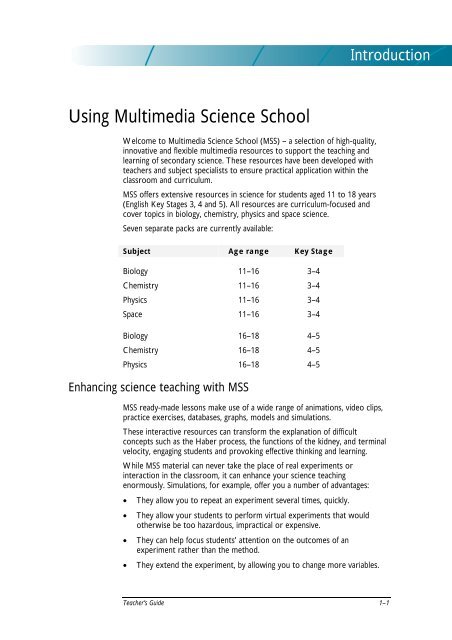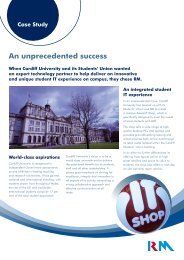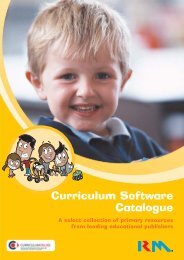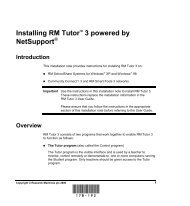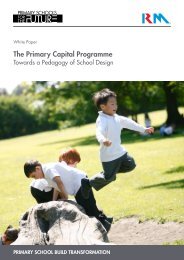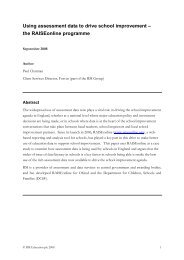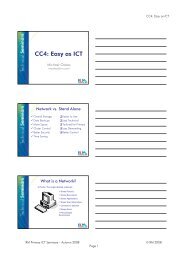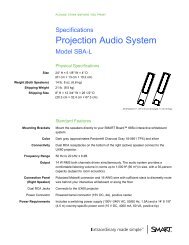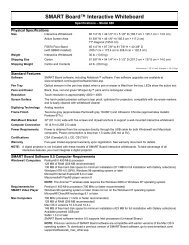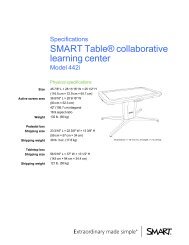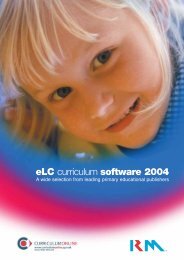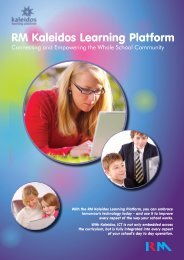Science Content Guide - RM.com
Science Content Guide - RM.com
Science Content Guide - RM.com
You also want an ePaper? Increase the reach of your titles
YUMPU automatically turns print PDFs into web optimized ePapers that Google loves.
Introduction<br />
Using Multimedia <strong>Science</strong> School<br />
Wel<strong>com</strong>e to Multimedia <strong>Science</strong> School (MSS) – a selection of high-quality,<br />
innovative and flexible multimedia resources to support the teaching and<br />
learning of secondary science. These resources have been developed with<br />
teachers and subject specialists to ensure practical application within the<br />
classroom and curriculum.<br />
MSS offers extensive resources in science for students aged 11 to 18 years<br />
(English Key Stages 3, 4 and 5). All resources are curriculum-focused and<br />
cover topics in biology, chemistry, physics and space science.<br />
Seven separate packs are currently available:<br />
Subject Age range Key Stage<br />
Biology 11–16 3–4<br />
Chemistry 11–16 3–4<br />
Physics 11–16 3–4<br />
Space 11–16 3–4<br />
Biology 16–18 4–5<br />
Chemistry 16–18 4–5<br />
Physics 16–18 4–5<br />
Enhancing science teaching with MSS<br />
MSS ready-made lessons make use of a wide range of animations, video clips,<br />
practice exercises, databases, graphs, models and simulations.<br />
These interactive resources can transform the explanation of difficult<br />
concepts such as the Haber process, the functions of the kidney, and terminal<br />
velocity, engaging students and provoking effective thinking and learning.<br />
While MSS material can never take the place of real experiments or<br />
interaction in the classroom, it can enhance your science teaching<br />
enormously. Simulations, for example, offer you a number of advantages:<br />
• They allow you to repeat an experiment several times, quickly.<br />
• They allow your students to perform virtual experiments that would<br />
otherwise be too hazardous, impractical or expensive.<br />
• They can help focus students’ attention on the out<strong>com</strong>es of an<br />
experiment rather than the method.<br />
• They extend the experiment, by allowing you to change more variables.<br />
Teacher’s <strong>Guide</strong> 1–1


